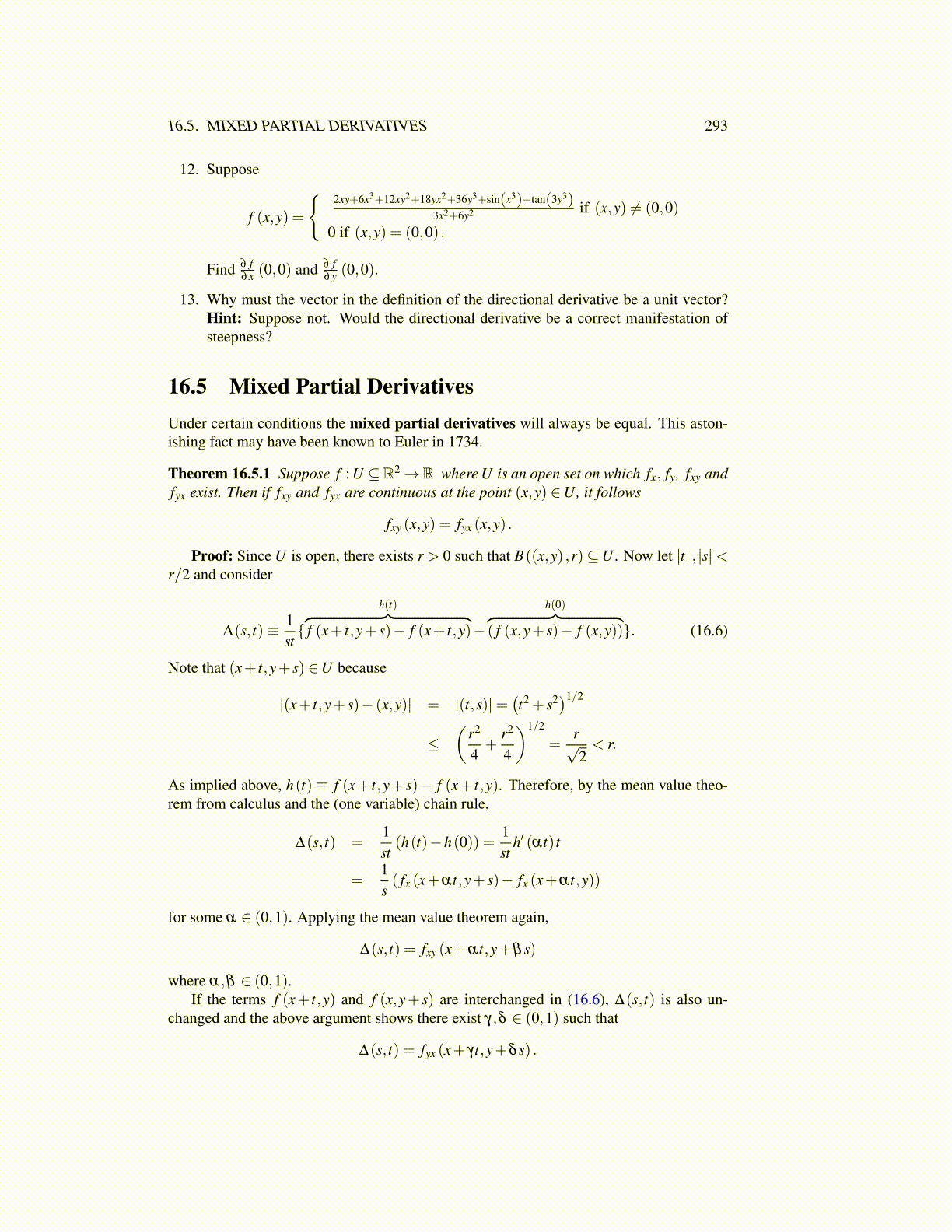
16.5. MIXED PARTIAL DERIVATIVES 293
12. Suppose
f (x,y) =
{2xy+6x3+12xy2+18yx2+36y3+sin(x3)+tan(3y3)
3x2+6y2 if (x,y) ̸= (0,0)
0 if (x,y) = (0,0) .
Find ∂ f∂x (0,0) and ∂ f
∂y (0,0).
13. Why must the vector in the definition of the directional derivative be a unit vector?Hint: Suppose not. Would the directional derivative be a correct manifestation ofsteepness?
16.5 Mixed Partial DerivativesUnder certain conditions the mixed partial derivatives will always be equal. This aston-ishing fact may have been known to Euler in 1734.
Theorem 16.5.1 Suppose f : U ⊆R2→R where U is an open set on which fx, fy, fxy andfyx exist. Then if fxy and fyx are continuous at the point (x,y) ∈U, it follows
fxy (x,y) = fyx (x,y) .
Proof: Since U is open, there exists r > 0 such that B((x,y) ,r)⊆U . Now let |t| , |s|<r/2 and consider
∆(s, t)≡ 1st{
h(t)︷ ︸︸ ︷f (x+ t,y+ s)− f (x+ t,y)−
h(0)︷ ︸︸ ︷( f (x,y+ s)− f (x,y))}. (16.6)
Note that (x+ t,y+ s) ∈U because
|(x+ t,y+ s)− (x,y)| = |(t,s)|=(t2 + s2)1/2
≤(
r2
4+
r2
4
)1/2
=r√2< r.
As implied above, h(t) ≡ f (x+ t,y+ s)− f (x+ t,y). Therefore, by the mean value theo-rem from calculus and the (one variable) chain rule,
∆(s, t) =1st(h(t)−h(0)) =
1st
h′ (αt) t
=1s( fx (x+αt,y+ s)− fx (x+αt,y))
for some α ∈ (0,1). Applying the mean value theorem again,
∆(s, t) = fxy (x+αt,y+β s)
where α,β ∈ (0,1).If the terms f (x+ t,y) and f (x,y+ s) are interchanged in (16.6), ∆(s, t) is also un-
changed and the above argument shows there exist γ,δ ∈ (0,1) such that
∆(s, t) = fyx (x+ γt,y+δ s) .